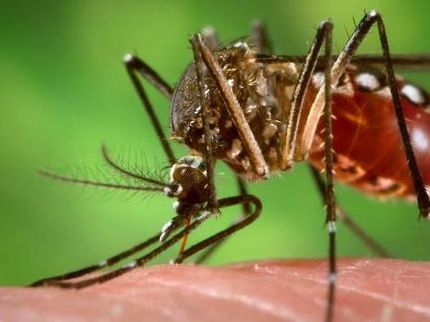Illuminating protein networks in 1 step
A new assay capable of examining hundreds of proteins at once and enabling new experiments that could dramatically change our understanding of cancer and other diseases has been invented by a team of University of Chicago scientists. Described in Nature Methods, the new micro-western arrays combine the specificity of the popular "Western blot" protein assay with the large scale of DNA microarrays. The technique will allow scientists to observe much of a cell's intricate protein network in one experiment rather than peeking at one small piece at a time.
Since the 1970's, laboratories have used Western blots to measure proteins. Cellular material is loaded into a gel and proteins of different sizes are separated by an electric field. A protein is then targeted by an antibody, allowing scientists to measure the amount present in the cells.
The method has led to numerous findings across the field of cell biology, but is limited by a need for large amounts of cell material and expensive antibodies, and the inability to measure more than a handful of proteins at a time. With hundreds or even thousands of proteins involved in cellular networks, scientists were restricted to observing only a small fraction of protein activity with each experiment.
Micro-western arrays adapt the technology of the micro-array, typically used to assess the expression of thousands of genes in a single experiment, to proteins. With pre-printed micro-western array gels, essentially comprising 96 miniature Western blots, scientists can compare the levels of hundreds of proteins simultaneously, or compare dozens of proteins under dozens of treatment conditions in one shot. Mere nanoliters of cell material and antibodies are needed for the experiments, reducing cost and maximizing the information obtained from a single sample.
To demonstrate the potential of the micro-western array, Richard B. Jones, senior author and assistant professor at and the University of Chicago's Ben May Department for Cancer Research and the Institute for Genomics and Systems Biology, and colleagues from the University of Chicago and the Massachusetts Institute of Technology looked at the behavior of proteins in a cancer cell line with elevated amounts of epidermal growth factor receptor (EGFR). The experiments found that activating EGFR simultaneously activated several other receptors in the cell – a new discovery that may explain why some tumors become resistant to cancer therapies. With more information, the method may potentially be used clinically for more precise diagnoses of cancer and other diseases that can direct individualized treatment.
Other news from the department science
Most read news
More news from our other portals
See the theme worlds for related content
Topic world Antibodies
Antibodies are specialized molecules of our immune system that can specifically recognize and neutralize pathogens or foreign substances. Antibody research in biotech and pharma has recognized this natural defense potential and is working intensively to make it therapeutically useful. From monoclonal antibodies used against cancer or autoimmune diseases to antibody-drug conjugates that specifically transport drugs to disease cells - the possibilities are enormous

Topic world Antibodies
Antibodies are specialized molecules of our immune system that can specifically recognize and neutralize pathogens or foreign substances. Antibody research in biotech and pharma has recognized this natural defense potential and is working intensively to make it therapeutically useful. From monoclonal antibodies used against cancer or autoimmune diseases to antibody-drug conjugates that specifically transport drugs to disease cells - the possibilities are enormous



















































